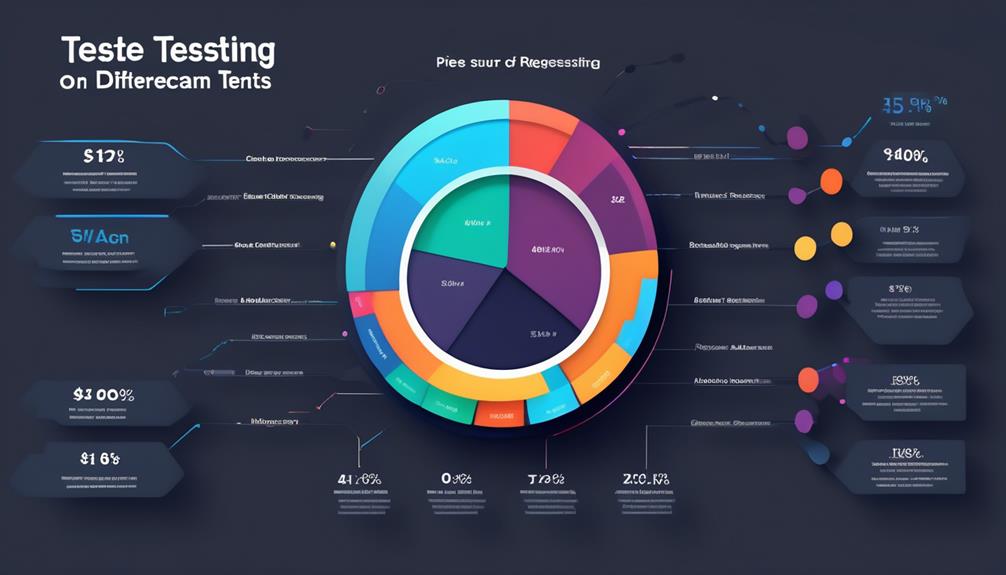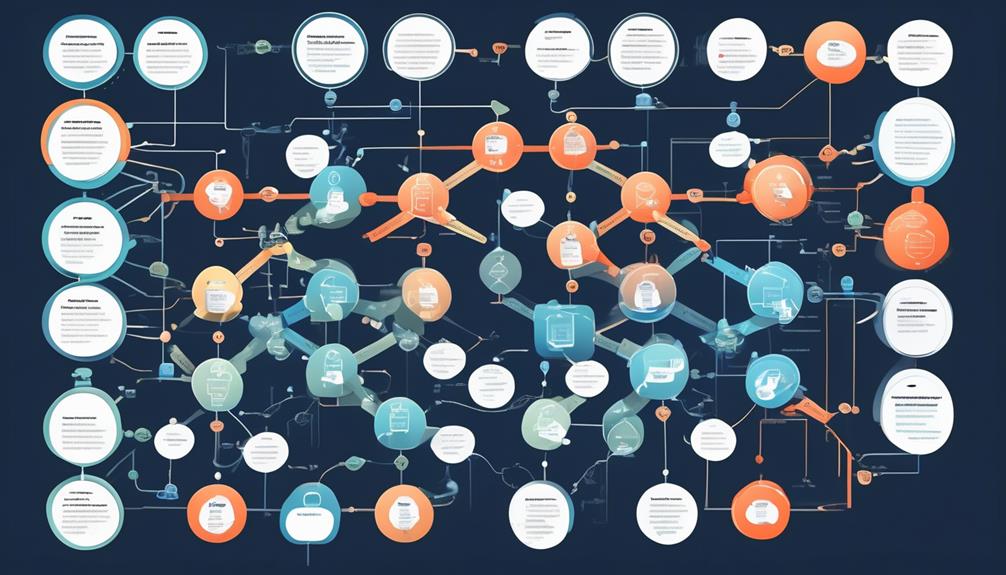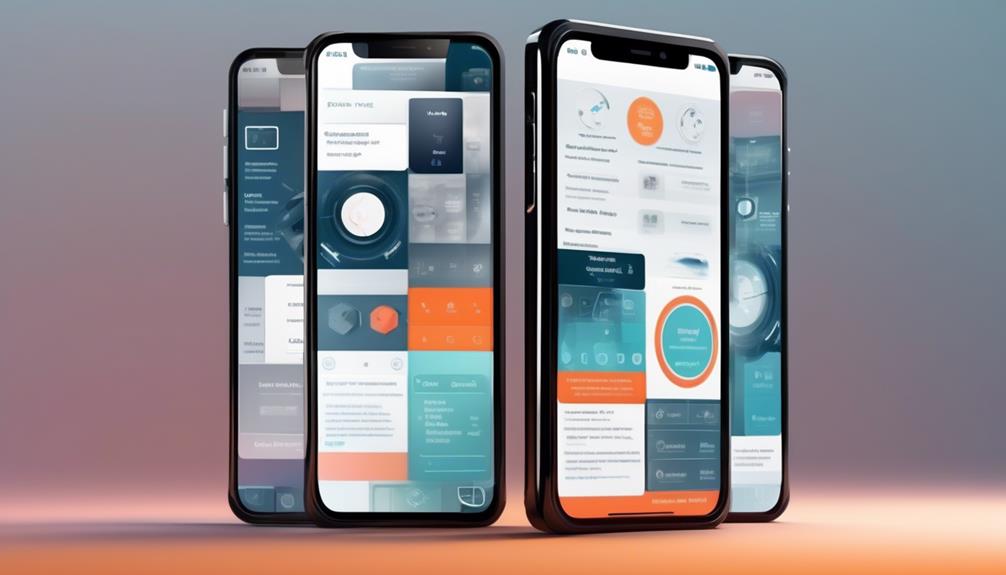Software Quality
Why Is Cross-Platform Testing Tough to Crack?
Struggling with cross-platform testing? Discover the complex factors that make it a tough nut to crack and how to overcome them.

Conducting tests across various platforms presents a considerable difficulty. It’s unsurprising that many organizations struggle to manage its complexities. Given the wide range of devices, operating systems, and web browsers, achieving full test coverage is comparable to battling an uphill battle.
But what exactly makes it so tough to crack?
Well, there are several key factors at play. Each presents its own set of hurdles that demand careful consideration and strategic solutions.
Key Takeaways
- Cross-platform testing ensures consistent performance of web applications across browsers, operating systems, and devices.
- The diverse ways browsers render code, including default settings, user-defined settings, hardware functionality, and web instruction processing engines, present challenges in cross-platform testing.
- Reliable tooling and infrastructure are required for efficient test automation in cross-platform testing.
- Compatibility issues with older browser versions can impact the performance of web applications and need to be addressed effectively.
Cross-Platform Testing Overview
Cross-platform testing is a critical process that ensures web applications perform consistently across various web browsers, operating systems, and devices. The challenges of cross-browser compatibility arise from the diverse ways in which web browsers render code. Factors such as default settings, user-defined settings, hardware functionality, and web instruction processing engines contribute to these differences. This can lead to variations in the appearance and functionality of web applications.
To address these challenges, testing tools and automation tools have been developed to facilitate cross-browser testing. These tools enable testers to assess the performance of web applications across different browser testing platforms and automate the testing process. By employing automated testing, testers can efficiently verify the functionality and appearance of web applications on various web browsers, operating systems, and devices.
Cross-platform testing is integral to ensuring that web applications deliver a consistent and positive user experience, regardless of the web client used.
Common Challenges in Cross-Platform Testing

Amid the complex landscape of web technology, the challenges in cross-platform testing encompass a range of factors that require careful consideration and strategic approaches. Common challenges in cross-platform testing include the automation of testing, the setup and maintenance of in-house infrastructure, device and browser coverage, time and resource constraints, and compatibility issues with older browser versions. These challenges can significantly impact the effectiveness and efficiency of the testing process, requiring meticulous attention to detail and robust testing strategies.
Challenges Description Test Automation Automation of cross browser testing can be a challenge due to the need for reliable tooling and infrastructure. In-house Infrastructure Setting up and maintaining in-house infrastructure for cross browser testing requires significant resources and effort. Device and Browser Coverage Lack of device and browser coverage can be a challenge, as testing across various platforms and technologies becomes complex. Time and Resource Constraints Time and resource constraints affect the thoroughness and efficiency of cross browser testing processes.
Automation Hurdles and Solutions
Striving for efficient and effective cross-platform testing, overcoming the challenges of automation is crucial for ensuring comprehensive and reliable testing processes. One of the primary hurdles is the automation of cross-browser testing.
To address this, leveraging tools like Selenium can enable teams to automate cross-browser testing for web applications across different browsers and operating systems.
Additionally, in-house infrastructure setup and maintenance can be daunting. Cloud-based testing platforms offer a solution by providing a scalable infrastructure for running tests across a wide range of browsers and devices, thereby alleviating the burden of maintaining physical devices and setups.
Another critical issue is the lack of device and browser coverage. Utilizing a combination of real devices and emulators or simulators can help achieve broader test coverage across various devices and browsers.
Moreover, compatibility issues with older browser versions can be mitigated by implementing strategies such as graceful degradation or progressive enhancement, ensuring that the application functions acceptably across different browser versions.
Addressing Compatibility Issues

Addressing compatibility issues in cross-platform testing requires employing cross-browser testing tools to simultaneously run tests on multiple browsers. As web applications need to function seamlessly across different combinations of browsers and platforms, compatibility issues can significantly impact application performance. By utilizing cross-browser testing tools, testers can identify and address discrepancies in how various browsers interpret code, ensuring consistent display and functionality.
Regularly updating and maintaining a browser compatibility matrix is essential to ensure compatibility across different browser versions. This practice helps in understanding which browsers and versions need to be prioritized for testing, thereby optimizing the testing process.
Additionally, implementing responsive design techniques is crucial for addressing compatibility issues, as it ensures proper rendering on different screen sizes and resolutions.
Leveraging browser developer tools and CSS frameworks can aid in fixing browser-specific issues and providing consistent rendering across different browsers. By utilizing these tools and techniques, testers can effectively address compatibility issues and enhance the overall quality of cross-platform testing.
Strategies for Improved Cross-Platform Testing
To enhance cross-platform testing, we’ll now explore effective strategies that build upon the need to ensure compatibility across different browsers and platforms.
- Select a cross-browser testing tool: Choose a tool with core features and a reliable browser inventory to address automation challenges. This ensures that test cases can be efficiently executed across multiple browsers, optimizing time and resources.
- Utilize a cloud-based cross-browser testing tool: Overcome in-house infrastructure setup and maintenance challenges by leveraging a cloud-based solution with reliable infrastructure. This allows for seamless testing across different operating systems and browsers, enhancing the user experience on various devices.
- Use a tool with a large inventory of devices and browsers: Address the challenge of lack of device and browser coverage by selecting a testing tool with a comprehensive inventory. This ensures thorough testing across multiple browsers and devices, leading to a more robust and reliable product.
- Employ a tool that supports older browser versions: Opt for a solution that supports older browser versions to mitigate compatibility issues. This strategy ensures that the user experience remains consistent across different browser versions, enhancing overall product quality.
Frequently Asked Questions
What Are Some Common Challenges Faced When Performing Cross Browser Testing?
When performing cross-browser testing, we encounter numerous challenges. These challenges include:
- Automation difficulties due to different browser behaviors.
- The need for in-house infrastructure setup and maintenance.
- Inadequate device and browser coverage.
- Time and resource constraints.
- Compatibility issues with older browser versions.
These challenges require a methodical approach and careful consideration to ensure comprehensive testing across various platforms.
What Are the Problems With Cross Platform and Cross Browser?
Cross-platform and cross-browser testing pose challenges due to varying device and browser coverage, compatibility issues with older versions, and resource constraints. These factors hinder comprehensive testing, leading to potential bugs and discrepancies across platforms.
Addressing these issues requires meticulous planning and automation to ensure thorough coverage and efficient testing. Additionally, maintaining in-house infrastructure adds complexity, making it crucial to strategize and prioritize testing efforts to overcome these obstacles.
What Are Some Common Issues That You Have Faced With Cross Browser Compatibility?
We faced common issues such as layout and alignment discrepancies, inconsistent rendering of CSS styles and properties, JavaScript compatibility problems, variations in font rendering and text wrapping, and performance differences impacting page load time.
These issues can make cross-browser compatibility testing challenging. It requires thorough testing and attention to detail to ensure a seamless user experience across different platforms and browsers.
How Do You Handle Cross Browser Testing?
We handle cross browser testing by employing a systematic approach that allows us to thoroughly analyze the performance and functionality of our web applications across different browsers, operating systems, and devices.
We use a combination of automated testing tools and manual testing techniques to ensure comprehensive coverage. This approach helps us identify and address any compatibility issues and ensures a seamless user experience across various web clients.
Conclusion
In conclusion, cross-platform testing presents numerous challenges. These challenges include automation hurdles, compatibility issues, and lack of device and browser coverage. However, by addressing these challenges with strategic solutions and improved testing strategies, it’s possible to overcome these obstacles and achieve more efficient and effective cross-platform testing.
With the right approach and resources, the truth is that cross-platform testing can be cracked. This will ultimately lead to better quality and user experience across multiple platforms.
Randy serves as our Software Quality Assurance Expert, bringing to the table a rich tapestry of industry experiences gathered over 15 years with various renowned tech companies. His deep understanding of the intricate aspects and the evolving challenges in SQA is unparalleled. At EarnQA, Randy’s contributions extend well beyond developing courses; he is a mentor to students and a leader of webinars, sharing valuable insights and hands-on experiences that greatly enhance our educational programs.
Software Quality
What Defines Best Practices in Automated Testing?
Ascertaining the defining factors of best practices in automated testing is crucial for ensuring the efficacy and reliability of software products.

Creating the best strategies for automated testing is akin to navigating through a complex maze; there are many paths available, but only a handful will lead to the desired outcomes. As specialists in this field, we understand the significance of establishing clear guidelines and standards that ensure the efficacy and efficiency of automated testing approaches.
However, with the ever-evolving landscape of technology and development practices, the definition of best practices in automated testing continues to shift. Join us as we explore the key factors and considerations that shape these best practices, and discover how they can impact the quality and reliability of software products.
Key Takeaways
- Choose appropriate test cases for automation based on technical expertise, application nature, and business-critical features.
- Select the right testing framework or tool based on software nature, team’s experience, and budget constraints.
- Maintain systematic and detailed records of test executions and outcomes for efficient debugging and analysis.
- Properly allocate testing effort based on resource distribution, time management, and testing prioritization.
Test Suite Selection
When considering test suite selection, it’s crucial to identify and choose the appropriate set of test cases for automation based on factors such as technical expertise, application nature, and business-critical features. Automated testing plays a vital role in the software development process, and selecting the right tests for automation is key to its success.
By carefully evaluating the nature of the application and the technical skills of the team, we can determine which tests are best suited for automation. Additionally, identifying business-critical features ensures that these aspects are thoroughly tested through automation.
Furthermore, test suite selection involves the identification and removal of unstable tests in regression packs to ensure consistent and accurate test results. This process is essential for maintaining the reliability of the automated tests.
Moreover, choosing the appropriate testing framework or tool based on the nature of the software, team’s experience, and budget constraints is crucial for effective test suite selection. These considerations ensure that the testing process is efficient and aligns with the goals of the automation testing.
Testing Tool and Framework

When selecting testing tools and frameworks, it’s crucial to consider the specific criteria for tool selection and how the chosen tool will integrate with the existing framework. Making informed decisions based on the expertise and experience of the team, as well as the nature of the application being tested, is essential.
Tool Selection Criteria
Considering the nature of the software and the expertise of our team, the selection of testing tools and frameworks must be carefully evaluated. When implementing test automation, the following criteria should guide the selection of suitable automation tools:
- Nature of the Software: Assess whether the testing tool is suitable for the specific type of software, such as web-based or mobile-based applications.
- Team Expertise: Evaluate the team’s familiarity with different frameworks, languages, and tools to ensure the selected tool aligns with their skills and capabilities.
- Cost and Support: Compare the advantages and disadvantages of open-source versus commercial testing tools to align with budget constraints. Additionally, assess the features, community support, and maintenance status of the tools before selection.
- Compatibility: Ensure that the programming language and framework of the chosen tool align with the test automation strategy and the team’s expertise.
Framework Integration
Integrating testing tools with the right frameworks enhances test coverage and accuracy, ensuring seamless and efficient test automation processes. It allows for leveraging the strengths of both the testing tool and the chosen framework, ensuring scalability, maintainability, and reusability of automated test scripts. Proper integration enables the creation of robust and effective automated testing solutions. The table below provides a comparison between different testing tools and frameworks, highlighting the key features and benefits of each.
Testing Tool Framework Key Features Tool A Framework X – Scalability Tool B Framework Y – Maintainability Tool C Framework Z – Reusability
This comparison helps the QA team in making informed decisions based on the specific requirements of their automated testing strategy and development needs.
Test Records Management
Effective management of test records is crucial for maintaining a comprehensive and organized repository of test failures, including text and video logs, to aid in debugging and issue resolution.
In the realm of test records management, it’s essential to keep records of test failures using screenshots and video recordings. This practice helps identify errors and failures for efficient debugging.
Additionally, capturing and storing test results and logs is vital for future reference and analysis, ensuring that the testing framework is robust and reliable.
Moreover, maintaining a systematic and detailed database of test executions and outcomes is imperative for effective debugging and analysis. This approach facilitates collective ownership of the testing process, ensuring that all team members can access and utilize the test records to enhance the quality of automation test cases and manual testing. It also supports the practice of regression testing, allowing teams to verify that recent code changes haven’t adversely affected existing functionalities.
As a key component of Test Automation Best Practices, utilizing a tool like Selenium for test records management can significantly streamline the debugging and issue resolution processes.
Test Environment Setup

Setting up the test environment involves ensuring that hardware and network configurations are properly set up and organizing test data for availability during test execution. Proper planning and organization of the test environment are crucial for the successful execution of automation tests.
It’s important to have the necessary tools available for setting up the test environment, including virtual machines, containers, and configuration management tools. Test planning should include allocating time for setting up the test environment as part of the overall testing early in the test planning process. This ensures that the environment is ready for the test scripts and test suites.
Additionally, cleaning up test data after test execution is essential for maintaining the integrity of the test environment. If using production data, it’s important to consider masking sensitive information to protect privacy and comply with data protection regulations.
Performing a smoke test to validate the test environment’s build stability is also a critical step before initiating a test run.
Testing Effort Allocation

When it comes to testing effort allocation, we need to consider resource distribution, time management, and testing prioritization.
It’s crucial to ensure that the right people are allocated to the right tasks, that time is managed efficiently, and that testing efforts are prioritized based on risk and impact.
Resource Distribution
Proper allocation of testing effort based on individuals’ technical expertise is essential for optimizing resource distribution and enhancing overall testing effectiveness.
When distributing resources within QA teams for automated testing, the following factors should be considered:
- Technical Expertise: Assign test cases based on individuals’ proficiency with different testing types and test automation tools.
- Tool Utilization: Ensure that the right skills are utilized for effective creation and execution of test cases using various automation frameworks.
- Efficient Resource Use: Optimize the allocation of manual and automated test cases to team members based on their technical strengths.
- Enhanced Testing Effectiveness: By distributing testing efforts according to technical expertise, QA teams can maximize the impact of regression testing and overall software testing.
Time Management
To optimize our testing efforts and ensure effective allocation of resources, we must now focus on managing our time efficiently within the realm of automated testing.
Time management is crucial for the QA team to prioritize test cases, allocate time for manual testing where needed, and run automated tests effectively.
It’s essential to allocate testing efforts based on technical expertise and implement data-driven tests to save time and improve efficiency.
Prioritizing detailed test reporting provides comprehensive insights and enhances the effectiveness of automated testing.
Choosing the right testing framework or tool based on the software’s nature and the team’s experience is also crucial for time management.
Additionally, testing on real devices is essential to optimize for different configurations and screen resolutions, replicating real user conditions.
These practices ensure efficient time management in automated testing.
Testing Prioritization
In optimizing testing efforts, prioritizing test suites based on technical expertise is crucial for effective testing allocation and resource utilization. When considering testing prioritization, it’s important to allocate test suites according to the skill levels required for different testing tools.
Efficiently assigning tests based on technical proficiency ensures effective utilization of team resources. This optimization of testing efforts by allocating test suites based on technical expertise within the team leads to efficient test creation and execution.
Quality Test Data Usage

When using quality test data, it is essential to ensure that it accurately represents real-world scenarios and covers a wide range of potential use cases. Quality test data usage is crucial in automated testing to validate the accuracy and reliability of the test code. Whether you are conducting usability testing for a user interface or executing data-driven tests for web applications, the quality of the test data directly impacts the effectiveness of the testing process. It is also important to consider the tool you choose for generating and managing test data, as well as the level of programming skills required to manipulate and utilize the data effectively.
Key Considerations Description Real-world Scenarios Ensure that the test data reflects actual usage scenarios to simulate real-world conditions accurately. Data Diversity Cover a wide range of potential use cases to validate the system’s behavior under various conditions. Tool Selection Choose a test data generation and management tool that aligns with the specific requirements of your automated testing process. Skill Requirements Assess the programming skills necessary to manipulate and utilize the test data effectively within the testing framework.
UI-Resistant Automated Tests

Quality test data usage is crucial in automated testing, and an important aspect of this is the implementation of UI-Resistant Automated Tests, which are designed to withstand changes in the user interface and ensure test stability. When considering UI-Resistant Automated Tests, there are several key points to understand:
- Unique Identifiers: These tests use unique identifiers for UI elements to avoid test failures due to minor UI modifications, ensuring that the tests remain stable even when the UI changes.
- Reduced Maintenance Efforts: UI-Resistant Automated Tests reduce maintenance efforts and enhance the reliability of automated testing by focusing on the functionality of the application rather than the specific appearance.
- Efficient Test Automation: By minimizing the impact of UI alterations on test scripts, UI-Resistant Automated Tests contribute to efficient test automation, allowing the testing process to remain robust and reliable.
- Resilience to UI Changes: UI-Resistant Automated Tests are resilient to UI changes, making them crucial for a development team looking to create stable and reliable automated test cases.
Incorporating UI-Resistant Automated Tests into automated testing strategies can greatly enhance the stability and resilience of the testing process, thereby reducing the need for technical support and ensuring a more efficient testing workflow.
Test Automation Planning

Our automated testing team’s first step in planning involves establishing clear goals and objectives to define the scope, prioritize test cases, and set measurable metrics. This ensures that our efforts are focused and aligned with the project’s needs. Additionally, we perform a risk analysis to identify potential risks and associated costs, enabling us to select a suitable automation framework based on the project requirements. We also develop an automation tool strategy based on available resources and requirements, considering the suitability of different automation testing tools based on key functionalities. In the early stages of development, creating a course of action with a specific timeframe and responsibilities for each action allows us to plan for test automation as early as possible. Furthermore, we ensure a well-defined process for the test automation roll-out to align automated testing goals with overall QA and business objectives. The table below outlines the key aspects of test automation planning.
Key Aspect Description Importance Setting clear goals Defining the scope, prioritizing test cases, and setting measurable metrics to align with project needs Ensures focused and aligned efforts Automation tool strategy Developing a strategy based on available resources and requirements, considering the suitability of different tools Enables selection of the right tools Well-defined process Ensuring a clear process for test automation roll-out to align with overall QA and business objectives Aligns automated testing goals with objectives
Test Automation Execution

Execution of automated tests involves running test scripts to validate the software’s functionality, ensuring efficient and accurate verification of its performance. To achieve successful test automation execution, the team must select the appropriate test suites, assign them to individuals with relevant technical expertise, and emphasize collective ownership and team involvement.
Identifying and removing unstable tests in regression packs is crucial for consistent and accurate test results. Additionally, choosing the right testing framework or tool, such as Selenium, based on the nature of the software and testers’ experience is essential. This ensures that the automation tools align with the types of testing required and support data-driven tests and continuous testing.
Frequently Asked Questions
What Are Automation Testing Best Practices?
We found that automation testing best practices significantly impact product quality and time-to-market. Efficiently assigning test suites based on technical expertise optimizes resources and test creation.
Involving the entire team in automation testing improves communication and decision-making. Consistent and accurate test results are achieved by identifying and removing unstable tests.
Selecting the appropriate tool based on the software’s nature, team experience, and budget constraints is crucial for effective automation testing.
What Is the Best Approach for Automation?
The best approach for automation testing involves several key factors:
- Assigning test suites based on technical expertise: It is important to assign test suites to individuals who have the necessary technical expertise and knowledge. This ensures that the automation tests are developed and executed effectively.
- Promoting collective ownership of tests: Automation testing should not be the responsibility of just one person. It is important to promote collective ownership of tests among team members. This allows for better collaboration, knowledge sharing, and overall improvement in the quality of automation tests.
- Removing uncertainty in testing: Automation testing should aim to remove any uncertainty or ambiguity in the testing process. This can be achieved by clearly defining test scenarios, test data, and expected results. Clear documentation and communication are essential in minimizing uncertainty.
- Choosing the right framework or tool: Selecting the appropriate automation framework or tool is crucial for successful automation testing. The chosen framework or tool should align with the requirements of the project and the technical capabilities of the team. It should also provide features and functionalities that support efficient and effective automation testing.
In addition to these factors, it is crucial to test on real devices for comprehensive testing. Testing on real devices ensures that the application or software being tested behaves as expected across different platforms, screen sizes, and operating systems.
What Is the Recommended Test Automation Strategy?
When considering the recommended test automation strategy, it’s crucial to align with the project’s goals and the team’s skill set.
Utilizing a diverse set of frameworks and tools based on testers’ experience and comfort can lead to effective test automation.
Additionally, distributing test suites based on individuals’ technical expertise ensures efficient test creation.
It’s essential to avoid appointing a single tester for automation projects and instead focus on team collaboration and knowledge sharing.
What Factors Should You Consider When Determining What Tests to Automate?
When determining what tests to automate, we consider the following factors:
- The frequency of test execution
- The potential for human errors in manual testing
- The time-consuming nature of the test
- The technical expertise required
- The value they bring to the application
We prioritize tests that cover critical business features and essential functionalities. These are likely to be run repeatedly and are prone to human error during manual testing. This assessment ensures efficient and effective test automation that maximizes application quality.
Conclusion
In conclusion, implementing best practices in automated testing is like building a sturdy and reliable bridge. It requires careful planning, the right tools, and a strong foundation to support the weight of testing efforts.
By following these best practices, we can ensure that our automated testing processes are efficient, effective, and able to withstand the challenges of software development.
Randy serves as our Software Quality Assurance Expert, bringing to the table a rich tapestry of industry experiences gathered over 15 years with various renowned tech companies. His deep understanding of the intricate aspects and the evolving challenges in SQA is unparalleled. At EarnQA, Randy’s contributions extend well beyond developing courses; he is a mentor to students and a leader of webinars, sharing valuable insights and hands-on experiences that greatly enhance our educational programs.
Software Quality
6 Best Techniques for Mobile App QA
Master the art of mobile app quality assurance with these six essential techniques – your key to ensuring flawless app performance.

We’ve all been there – the frustration of navigating through a mobile app that isn’t functioning properly or performing up to par. But fear not, as there are six tested strategies for mobile app QA that can assist in mitigating this problem.
From test automation to real device testing, these techniques are essential for ensuring the quality and success of mobile app development. But how exactly do they work, and what are the best practices for implementing them?
Let’s explore these techniques and dive into the world of mobile app QA to uncover the secrets behind their effectiveness.
Key Takeaways
- Platform testing across different operating systems and devices is crucial for ensuring consistent app performance and user experience.
- Customer-centric testing and user experience analysis are essential for evaluating usability, intuitiveness, and gathering direct feedback from end-users.
- Thorough functionality testing and quality assurance help ensure that every feature and aspect of the app is working as intended.
- Performance testing and optimization are important for addressing performance bottlenecks, scalability issues, and improving app stability and responsiveness.
Platform Testing
When conducting platform testing for mobile apps, we meticulously assess the app’s functionality and user experience across various platforms, such as Android, iOS, and web-based environments. This involves testing on real devices to ensure that the app performs consistently across different operating systems and devices.
For native apps, platform-specific testing techniques are essential due to the variations in control and maintenance across different platforms. Similarly, while functional testing approaches for native and hybrid apps may overlap, platform-specific testing is crucial for comprehensive coverage.
Web-based apps, on the other hand, require testing across different browsers and screen sizes to guarantee optimal performance and user experience. Performance and load testing are particularly vital for web-based apps to ensure stability and responsiveness across platforms.
Customer-Centric Testing

When it comes to customer-centric testing, our focus shifts to usability testing and user experience analysis.
We aim to understand how customers interact with the app and prioritize functionalities that directly impact their experience.
Usability Testing
Usability testing, a crucial phase in mobile app QA, focuses on evaluating the app’s user-friendliness and intuitive design from the customer’s perspective. It involves observing real users to identify potential usability issues and improve the overall user experience. Tasks such as navigation, feature usage, and feedback collection gauge customer satisfaction and ease of use. Customer-centric testing ensures the app meets the needs and expectations of the target audience, leading to higher user engagement and satisfaction. This approach helps in identifying and addressing usability issues early in the development process, ultimately enhancing the app’s market acceptance and success.
Best Practices for Usability Testing Involve real users in the testing process Use a combination of qualitative and quantitative data collection methods Continuously iterate based on user feedback
User Experience Analysis
To comprehensively assess the user experience of a mobile app, we employ Customer-Centric Testing, which focuses on understanding and improving the app’s usability and customer satisfaction. This approach involves evaluating the app from the user’s perspective, considering factors such as ease of use, intuitiveness, accessibility, and overall user satisfaction.
By prioritizing the user’s needs and preferences, Customer-Centric Testing helps in creating a mobile app that resonates with its target audience. It aims to gather direct feedback from end-users to drive improvements in the app’s design, functionality, and overall user experience.
Incorporating best practices in User Experience Analysis ensures that mobile apps meet the highest standards of usability and customer satisfaction, ultimately leading to greater user engagement and loyalty.
Functionality and UX Testing
When it comes to functionality testing, we ensure that every feature and aspect of the app is working as intended.
By testing real-time scenarios and natural app interactions, we can validate the user experience and identify any potential issues.
Incorporating user feedback into the testing process allows us to refine and optimize the app based on actual customer interactions, ensuring that usability and UI testing focus on intuitive app usage and efficient functionality.
Functionality Testing Importance
Ensuring the seamless functionality and user experience of a mobile app through thorough testing is crucial for its overall reliability and user satisfaction. Here’s why functionality testing is of utmost importance:
- Reliability: Functionality testing ensures that the app performs consistently and reliably under various user interactions.
- User Satisfaction: By identifying and addressing bugs early, functionality testing enhances user satisfaction through a smooth and error-free experience.
- Optimized Performance: Thorough testing allows for the optimization of key app functions, promoting user-friendly experiences.
- App Standards: Functionality testing helps in upholding the desired standards for app functionality and user experience.
In the realm of mobile app testing, incorporating best practices, including automated testing, is essential for achieving comprehensive functionality and UX testing.
UX Testing Best Practices
Functionality testing’s significance extends to the realm of UX testing best practices, where attention to detail and methodical analysis are critical for ensuring a seamless user experience. When conducting UX tests, it is important to consider natural app gestures/interactions, operating systems, and gesture testing. By implementing effective testing strategies, such as testing on real devices, early testing, and data-driven testing, app developers can ensure that the app delivers a consistent and intuitive user experience. To visualize the significance of UX testing best practices, consider the following table:
| UX Testing Best Practices | Description |
|---|---|
| Natural App Gestures/Interactions | Test how the app responds to natural gestures and interactions. |
| Operating Systems | Ensure the app functions seamlessly across different operating systems. |
| Gesture Testing | Validate the accuracy and responsiveness of app gestures. |
Adhering to these best practices will contribute to a positive user experience and enhance the overall quality of the app.
Real Device Testing

Real device testing provides accurate and realistic results for mobile app testing, ensuring comprehensive evaluation of performance and compatibility across various devices. When it comes to testing mobile apps, real device testing offers several benefits that contribute to the overall quality of the app.
Here are four reasons why real device testing is essential:
- Identifying Device-Specific Issues: Real device testing allows us to uncover issues that are specific to certain mobile devices, which may not be evident when using emulators. This ensures that the app functions seamlessly across a wide range of devices.
- Comprehensive Performance Tests: Testing the app on real mobile devices enables us to conduct thorough performance tests, simulating real-world usage scenarios. This helps in identifying any performance bottlenecks and optimizing the app for a smooth user experience.
- Ensuring Compatibility: Real devices allow us to test various scenarios, ensuring that the app is compatible with different devices, screen sizes, and resolutions. This is crucial for delivering a consistent user experience.
- Supplementing Automated Testing: While automated testing is valuable, manual tests on real devices provide an additional layer of assurance, especially in validating the app’s functionality in diverse real-world conditions.
Performance Testing

With the aim of optimizing app stability and responsiveness, performance testing is a crucial phase in the mobile app quality assurance process, allowing for the identification of performance bottlenecks and scalability issues. To conduct effective performance testing, a combination of automated testing and manual tests is often employed. Load testing, a type of performance testing, simulates high user traffic to assess the app’s performance under stress. This is crucial for ensuring that the app can handle the expected volume of users without crashing or slowing down. Performance testing also requires repetition to ensure more accurate results. Best practices for performance testing include allocating the necessary resources for testing, utilizing performance testing tools, and integrating performance testing into the overall development process. By following these best practices, app developers and QA teams can ensure that the app’s performance meets the expected standards and provides a seamless user experience.
Types of Testing Description Benefits Performance Testing Evaluates app’s responsiveness and speed Identifies bottlenecks and scalability issues Load Testing Simulates high user traffic Assesses app’s performance under stress Automated Testing Uses automated tools for testing Increases efficiency and accuracy Manual Tests Human-driven testing approach Allows for flexibility and intuition
Balanced Testing Approach

In our pursuit of a comprehensive mobile app quality assurance process, the transition from performance testing to a balanced testing approach is essential for ensuring thorough coverage of functionality and user experience. To achieve this, we need to leverage the best practices for mobile app QA and embrace a balanced testing approach that combines both automated testing and manual testing techniques.
Here’s how we can achieve this:
- Testing naturally evolves: Embrace the evolution of testing techniques by combining automated testing for repetitive tasks and manual testing for exploratory scenarios.
- Run Performance Testing Helps: Performance testing helps in identifying and rectifying bottlenecks, ensuring that the app functions optimally under various conditions.
- Utilize Real Device Testing and Emulators: Leveraging both real device testing and emulators is crucial for achieving accurate results and coverage across different devices and platforms.
- Hermetic Testing with Real-World Scenarios: Balancing hermetic testing with real-world scenarios is essential for effective testing, ensuring that the app performs as expected in real-life situations.
Cloud-based Device Testing

When it comes to mobile app QA, cloud-based device testing offers a multitude of benefits.
We can examine the advantages of cloud testing, such as scalability and comprehensive test coverage.
Additionally, we can explore best practices for cloud-based testing, ensuring efficient and effective mobile app quality assurance.
Benefits of Cloud Testing
Cloud testing offers comprehensive coverage by allowing testing on a wide range of real devices, including different OS versions and screen sizes.
The benefits of cloud testing are numerous, and they include:
- Enhanced Efficiency: With access to a large pool of real devices remotely, testers can save time and resources, reducing the need for physical devices.
- Scalability and Flexibility: Cloud-based testing allows for simultaneous testing on multiple devices, enhancing efficiency and test coverage.
- Compatibility Assurance: Testers can ensure that the app performs optimally across various environments by accessing the latest devices and OS versions.
- Faster Issue Resolution: Cloud-based device testing aids in faster debugging and issue resolution by providing instant access to diverse devices for comprehensive testing.
These best practices in app development and testing demonstrate the significant advantages of leveraging cloud testing for mobile app quality assurance.
Best Practices for Cloud-Based Testing
With careful consideration of diverse real-world conditions, cloud-based device testing ensures precise and realistic results, enabling thorough identification of device-specific issues and performance bottlenecks.
Testing mobile apps on a variety of real devices is crucial for accurate results, as emulators may not replicate real-world conditions effectively. Leveraging a real device cloud for testing provides more precise and realistic outputs, reducing time-to-market and offering access to thousands of devices for faster debugging and releasing.
Automated tests on real devices can simulate real user interactions, ensuring comprehensive testing across different devices.
Best practices for cloud-based testing involve utilizing services like Katalon Testcloud for efficient testing, which can offer app performance insights and easy device switching.
Modular Testing Process

The modular testing process in mobile app QA involves breaking down the app into smaller, manageable units for focused testing and quicker issue isolation. This method allows for a more systematic and efficient approach to testing, ensuring that every component is thoroughly examined.
Here are the key benefits of employing a modular testing process:
- Improved Testing Solutions: By testing individual modules separately, we can identify and address issues more effectively, leading to higher-quality testing solutions.
- Reduced Testing Time: Focusing on specific modules enables us to streamline the testing process, reducing overall testing time and accelerating the app development lifecycle.
- Enhanced Test Cases: Modular testing facilitates the creation of targeted test cases, ensuring comprehensive coverage of all app functionalities and scenarios.
- Better User Experience: Identifying and resolving issues at a modular level contributes to a more stable and reliable app, ultimately delivering a better user experience.
Real-time Scenario Testing

After thoroughly examining the benefits of employing a modular testing process, our focus now shifts to real-time scenario testing in order to ensure the app’s functionality and user experience across various real-world situations.
Real-time scenario testing is an essential aspect of mobile app testing, as it involves evaluating the app’s performance under real-time settings and conditions. This includes testing for poor network connectivity, different time zones, and GPS locations to ensure that the app functions effectively in diverse scenarios. By simulating natural app interactions, payment workflows, and geotargeting, real-time scenario testing aims to replicate real user scenarios and gestures, providing valuable insights into the app’s performance in real-world usage.
Furthermore, real-time scenario testing goes beyond mere device testing, as it offers a comprehensive understanding of how the app behaves under realistic user conditions. This facilitates the identification of potential issues that may not be evident during traditional testing methods.
Support Policy Testing

When it comes to support policy testing, it’s crucial to have a comprehensive overview of the policies in place. This involves analyzing test case scenarios and ensuring compliance with regulations.
Our approach should concentrate on the most widely used devices and operating systems to align with end-user data and market research.
Additionally, we should consider the necessity of supporting outdated platforms.
Support Policy Overview
Based on end-user data and market research, we define our support strategy to concentrate testing on devices and OS with the most end customers. By doing so, we ensure that our mobile apps are optimized for the platforms used by the majority of our real users.
Our support policy is constantly reviewed every three months to stay aligned with the dynamic mobile industry. To maintain efficiency, we avoid testing every set of browsers, platforms, and operating systems, focusing instead on the most prevalent ones.
Additionally, we consider limiting support for outdated platforms, allowing us to allocate our resources more effectively during the development process.
- Concentrating testing on devices and OS with the most end customers.
- Reviewing support policy every three months to stay up with the mobile industry.
- Avoiding testing every set of browsers, platforms, and operating systems.
- Considering limiting support for outdated platforms.
Test Case Scenarios
We will now explore the Test Case Scenarios for Support Policy Testing, ensuring that our focus on the most prevalent devices and operating systems is reflected in our testing approach.
When creating test case scenarios, it’s crucial to consider the functional testing requirements specific to the support policy. We need to prioritize automated testing for repetitive and time-consuming tasks, allowing for efficient coverage across various devices and operating systems. However, manual testing remains essential for validating user experience and identifying edge cases.
Compliance With Regulations
With a focus on aligning our support strategy with end-user data and market research, our approach to compliance with regulations in support policy testing emphasizes prioritizing testing efforts on platforms with the most significant end-user impact. When considering compliance with regulations for mobile apps, we must ensure that our support strategy is aligned with the needs and preferences of real users. To achieve this, we concentrate our testing on devices and operating systems with the most end customers, allowing us to prioritize our efforts where they’ll have the most impact.
Additionally, we consider the implications of limiting support for outdated platforms, and we regularly review our support policy to stay up to date with the fast-paced mobile industry.
- Concentrating testing efforts on platforms with the most significant end-user impact evokes a sense of purpose and efficiency.
- Aligning support strategy with real user data and market research fosters a customer-centric approach.
- Regularly reviewing support policy demonstrates a commitment to staying abreast of industry trends.
- Prioritizing testing on devices and operating systems with the most end customers showcases a focus on delivering quality experiences to the largest audience.
Refinement and Optimization

Refinement and optimization of a mobile app require continuous improvements to enhance its performance and user experience. Testing and manual testing play a crucial role in this process, allowing for iterative testing and data analysis to identify areas for refinement.
It’s essential to ‘Test Often’ to catch and fix issues early in the development cycle. Incorporating real user feedback is also vital, as it provides insights into user preferences and behaviors, guiding the refinement and optimization process.
Additionally, a robust test automation strategy is necessary for efficient testing of native and hybrid apps across different devices. A device lab can aid in testing the app on a wide range of real devices, ensuring its performance and compatibility.
Regular monitoring, analysis, and iteration of the testing process contribute to the ongoing refinement and optimization of the mobile app. By focusing on these aspects, we can systematically enhance the app’s performance and user experience, providing a high-quality product that meets user expectations.
Manual and Automation Testing Integration

Integrating manual and automation testing enables comprehensive and efficient testing across diverse devices, locations, and user experience scenarios. This approach combines the accuracy of automation testing with the adaptability of manual testing, ensuring thorough coverage.
Here are four key reasons why integrating manual and automation testing is essential for mobile app QA:
- Enhanced Efficiency: By incorporating regular automated tests alongside manual testing, the overall testing process becomes more efficient and effective.
- Comprehensive Coverage: Automation in white-box, load, and performance tests can significantly enhance the overall efficiency and effectiveness of manual testing, leading to more comprehensive coverage.
- Adaptability: It enables testers to identify the most appropriate testing approach for each feature and development phase, thus improving the overall testing process.
- Real User Testing: Integrating manual and automation testing allows for real user testing, ensuring that the app performs seamlessly in real-world scenarios.
This integration is crucial for achieving high-quality mobile applications that meet the diverse needs of users across various devices and locations.
Usability and UI Testing

To ensure comprehensive quality assurance for mobile apps, the pivot from integrating manual and automation testing seamlessly transitions into the critical process of Usability and UI Testing. Usability testing ensures that the mobile app is intuitive and easy to use, while UI testing focuses on the visual and interactive elements, ensuring a seamless user experience. Both forms of testing are essential for guaranteeing a high-quality app that meets user expectations. When conducting usability testing, it is crucial to cover critical end-to-end processes and include checks for data type errors in the test plan. For UI testing, the test plan should encompass checks for navigational elements, ensuring that users can effortlessly navigate through the app. Below is a table summarizing the key aspects of usability and UI testing:
Usability Testing UI Testing Ensures app is intuitive and easy to use Focuses on visual and interactive elements Covers critical end-to-end processes Includes checks for navigational elements Includes checks for data type errors
Test Automation Best Practices

Test automation best practices enhance the efficiency and effectiveness of mobile app testing, ensuring thorough coverage and early bug identification. When implementing test automation for mobile apps, it’s crucial to follow these best practices:
- Modular Test Design: Breaking down the app into smaller units allows for easier testing, debugging, and issue isolation. This approach also facilitates parallel test execution, saving time and effort.
- Real User Simulation: Utilizing real-world data and simulating user interactions enables testing of various scenarios, helping to identify bugs and issues early and ensuring app performance and scalability.
- Comprehensive Test Coverage: Test automation improves coverage and reduces human error through early and regular testing. This ensures that all critical aspects of the app are thoroughly tested, providing confidence in its quality and reliability.
- Integration and Continuous Delivery: Integrating test automation into the continuous delivery pipeline ensures that the app is rigorously tested at every stage of development. This facilitates early bug detection and swift issue resolution, ultimately leading to a more robust and reliable mobile app.
Frequently Asked Questions
What Are the Best Practices in Mobile App Testing?
We believe the best practices in mobile app testing involve:
- Early and regular testing to ensure desired functionality, quick feedback, and reduced bug fixing time.
- Utilizing test automation to save time and effort, identify bugs early, and improve test coverage.
- Testing on real devices to provide accurate results and identify device-specific issues.
- Smaller unit testing to allow for focused testing on specific features and easier issue isolation.
- Data-driven testing to provide realistic scenarios and ensure performance under different conditions.
How Do I Test My Mobile App for Qa?
We test our mobile app for QA by employing test automation to save time, find bugs early, and simulate user interactions.
Starting testing early in development and testing regularly ensures quick feedback and reduces bug fixing time.
Testing on real devices provides accurate results and ensures compatibility across various devices.
Smaller unit testing breaks down the app into manageable parts and improves test coverage.
Data-driven testing uses real-world data for realistic scenarios and performance testing.
How Can I Improve My Mobile App Testing?
We can improve our mobile app testing by implementing test automation to save time and effort, catch issues early, and simulate user interactions.
Testing on real devices, not just emulators, provides accurate results and identifies device-specific issues.
Breaking down the app into smaller units for testing makes it more manageable and improves test coverage.
Using real-world data for testing provides realistic scenarios and ensures app performance and scalability.
Which Is Best Tool for Mobile App Testing?
We’ve extensively researched the best tool for mobile app testing and found that it largely depends on the specific needs of your project. Factors such as budget, team expertise, and the app’s requirements play a crucial role.
Compatibility with platforms and technologies, a balance between manual and automated testing, and robust support and documentation are key considerations.
Careful evaluation will help you select the most suitable tool for your mobile app testing needs.
Conclusion
In conclusion, by integrating manual and automation testing, we can ensure a comprehensive approach to quality assurance.
The juxtaposition of platform testing and customer-centric testing allows for a balanced focus on both technical functionality and user satisfaction.
This attention to detail, combined with the methodical approach of usability and UI testing, ultimately leads to the refinement and optimization of mobile apps, ensuring their success in the competitive market.
Randy serves as our Software Quality Assurance Expert, bringing to the table a rich tapestry of industry experiences gathered over 15 years with various renowned tech companies. His deep understanding of the intricate aspects and the evolving challenges in SQA is unparalleled. At EarnQA, Randy’s contributions extend well beyond developing courses; he is a mentor to students and a leader of webinars, sharing valuable insights and hands-on experiences that greatly enhance our educational programs.
Software Quality
4 Key Techniques for Ensuring Mobile App Quality
Just how can you ensure your mobile app delivers a seamless user experience? These four key techniques hold the answer.

We’ve all experienced the frustration that comes with a faulty mobile app – indeed, studies show that 88% of users are less likely to return to an app after a negative experience.
So, how can we ensure that our mobile apps are of the highest quality? Well, there are four key techniques that can make all the difference.
From proper planning and thorough testing to attention to detail and maintaining a quality assurance checklist, these techniques are crucial for delivering a seamless and enjoyable user experience.
But how exactly do these techniques work, and what steps can we take to implement them effectively?
Key Takeaways
- Define project goals and features with clarity and precision
- Meticulously test codes, features, and functionalities
- Conduct thorough testing on different devices, OS versions, and screen resolutions
- Employ different types of testing to evaluate overall performance
Conceptualization Stage Quality Assurance
During the conceptualization stage, we define project goals and features to guide the development process with clarity and precision. This stage sets the foundation for the entire mobile app development process, emphasizing the importance of quality assurance from the outset.
We meticulously craft the project goals, keeping the mobile user experience at the forefront of our considerations. Our development team ensures that the app’s features are aligned with the needs and expectations of the target audience.
Throughout this stage, quality assurance is integrated into every aspect, from creating detailed documentation to establishing a comprehensive checklist to maintain the highest quality standards. We emphasize thorough testing at this phase to catch any potential issues early on and to guarantee that the app meets the highest quality benchmarks.
Design Stage Quality Assurance

In laying the foundation for the mobile app’s development process, we ensure that the Design Stage Quality Assurance maintains a meticulous focus on attention to detail, thorough testing, and comprehensive documentation to prevent any potential issues and deliver a high-quality product.
Design Stage Quality Assurance is essential for app developers to ensure that the app meets the highest standards of mobile app quality. By conducting thorough testing on different devices, OS versions, and screen resolutions, potential compatibility issues can be identified and resolved early in the development process.
Additionally, documenting tests for consistency and accuracy is crucial during this stage to maintain overall quality. Prototyping and quality assurance checklists play a vital role in ensuring that the app aligns with the intended design and functionality.
Furthermore, performance testing helps in identifying and addressing any performance-related issues. It’s also important to focus on the quality of the privacy policy and ensure that it complies with relevant regulations to build trust and confidence among users.
Ultimately, the Design Stage Quality Assurance is integral in creating high-quality apps that meet user expectations.
Development Stage Quality Assurance
At the heart of the app development process, Development Stage Quality Assurance meticulously tests codes, features, and functionalities to ensure a high-quality end product, emphasizing thorough documentation and adherence to quality assurance checklists. Our focus on testing at this stage is crucial for identifying and addressing issues early in the development process. We ensure that the app meets the highest standards of quality by testing on various devices, screen resolutions, and OS versions to identify and resolve compatibility issues. Additionally, frequent testing and documentation of tests for consistency and accuracy are essential for fixing bugs and maintaining a high level of quality throughout the development phase.
Key Aspects of Development Stage Quality AssuranceDescription Meticulous Testing of Codes, Features, Functionalities Thorough testing to ensure high-quality end product Documentation and Adherence to Quality Assurance Checklists Critical for maintaining app quality during development Testing on Various Devices, Screen Resolutions, and OS Versions Identifying and resolving compatibility issues early on Frequent Testing and Documentation of Tests Fixing bugs and maintaining high quality throughout development phase
Testing Stage Quality Assurance

Continuing our focus on ensuring a high-quality end product, our attention now shifts to the meticulous testing and documentation of tests in the Testing Stage Quality Assurance, emphasizing compatibility, security, and reliability of the mobile app.
Mobile app development companies must employ different types of testing to evaluate the app’s overall performance. This includes functional testing to ensure the app takes into account key aspects of quality, such as how the user interacts with it and the better user experience it delivers.
Thorough testing ensures that the app functions seamlessly across various devices, operating systems, and screen resolutions, ultimately enhancing the quality of a mobile app. Security and reliability are also paramount, thus meticulous testing for confidentiality, authentication, authorization, storage, and web services is imperative.
This stage aims to fix bugs through frequent testing, ultimately improving the app’s performance and user experience. Additionally, the documentation of tests is crucial to maintain consistency and accuracy, ensuring that the app meets the highest standards in the mobile development industry.
Frequently Asked Questions
What Are the 3 Most Important Things You Would Consider When Developing a Mobile App?
When developing a mobile app, we prioritize user experience, performance, and security.
Our focus is on creating an intuitive and engaging interface, ensuring smooth and efficient functionality, and implementing robust security measures to protect user data.
How Do You Make a High Quality App?
To make a high-quality app, we focus on meticulous planning, detailed prototyping, and thorough testing on various devices and operating systems.
By maintaining a comprehensive quality assurance checklist and conducting security testing, we ensure the app’s overall quality and security.
Our attention to detail and rigorous testing process help to identify and address any compatibility issues, vulnerabilities, and potential pitfalls, resulting in a superior app experience for our users.
What Is the Key Factor to Consider When Designing for Mobile Apps?
When designing for mobile apps, the key factor to consider is the seamless user experience. We prioritize intuitive UI/UX design, ensuring compatibility across various devices and operating systems, and optimizing performance for speed and battery usage.
Security is paramount, with a focus on data protection and preventing unauthorized access. Adherence to platform-specific design guidelines and integration of best practices are integral to delivering high-quality mobile apps.
What Is Quality in Mobile Application?
Quality in mobile applications is a multifaceted concept. It involves meticulous planning, coding, and rigorous testing to ensure flawless performance.
Attention to detail and adherence to design guidelines for different platforms are essential. Various types of testing, such as functionality, usability, and security, contribute to overall quality.
Ultimately, mobile app quality is crucial for user satisfaction, brand reputation, and business success.
Conclusion
In conclusion, by diligently implementing the 4 key techniques for ensuring mobile app quality, we can confidently say that our app is well-equipped to provide a top-notch user experience.
With careful planning and testing, we’ve ensured that our app is free from any major issues and is ready to exceed expectations.
Our attention to detail and thorough quality assurance checklist have guaranteed that our app is of the highest standard.
Randy serves as our Software Quality Assurance Expert, bringing to the table a rich tapestry of industry experiences gathered over 15 years with various renowned tech companies. His deep understanding of the intricate aspects and the evolving challenges in SQA is unparalleled. At EarnQA, Randy’s contributions extend well beyond developing courses; he is a mentor to students and a leader of webinars, sharing valuable insights and hands-on experiences that greatly enhance our educational programs.
-

 Resources and Training2 weeks ago
Resources and Training2 weeks agoMaster Selenium Webdriver Training Today!
-

 SQA Techniques and Tools1 week ago
SQA Techniques and Tools1 week agoUnveiling the Role of Software Quality Assurance: What Do They Really Do?
-

 Fundamentals of SQA3 weeks ago
Fundamentals of SQA3 weeks agoUnderstanding Definition and Scope of Software Quality Assurance (SQA)
-

 SQA Best Practices3 weeks ago
SQA Best Practices3 weeks agoElevate Your Tech with Software Quality Assurance
-

 Fundamentals of SQA3 weeks ago
Fundamentals of SQA3 weeks agoKPI for Software Quality Assurance
-

 SQA Techniques and Tools3 weeks ago
SQA Techniques and Tools3 weeks agoExpert Usability Testing Strategies Revealed
-

 SQA Best Practices3 weeks ago
SQA Best Practices3 weeks agoTop SQA Best Practices for Quality Assurance
-

 SQA Techniques and Tools3 weeks ago
SQA Techniques and Tools3 weeks agoExpert Software Testing Services for Quality Assurance















